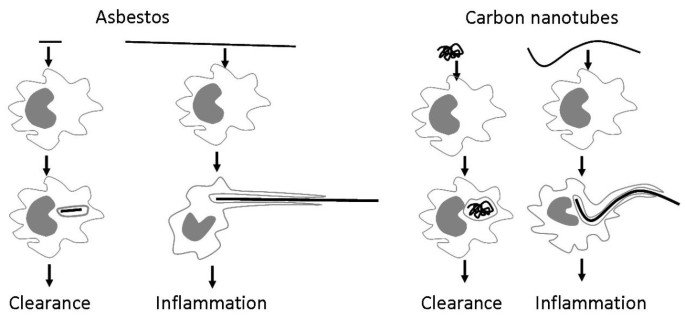Could Carbon Nanotubes Have The Same Dangers As Asbestos?
If you are a technology enthusiast, you have likely heard of the carbon nanotubes. These microscopic, extremely durable, fibers are an emerging technology which can have drastic impacts on technology and infrastructure. However, many experts have noted similar characteristics to asbestos. Today’s blog will discuss nanotubes and potential health risks.
What Are Carbon Nanotubes?
Carbon nanotubes, also known as buckytubes, are an allotrope of carbon. Allotropes have the same chemical composition but a different structure at the atomic level. Common allotropes of carbon are diamonds and graphite. Nanotubes were first discovered in 1991 by Japanese scientist, Sumio Iijima. Their size can range from one to ten nanometers in diameter and millimeters in length. Their size makes them coveted in the nanotechnology industry. Depending on the structure of the nanotube, the theoretical weight to strength ratio may be over 30 times that of kevlar used in bulletproof armor. Potential applications for these fibers include; construction, electronic transistors, and even in the medical field.
What Are The Health Risks?
The benefits of carbon nanotubes seem to be vast, however it may come with an associated cost. Due to their durability and size, they are very similar to asbestos. When asbestos was in its peak use, it was often referred to as the “miracle mineral” as it had a plethora of applications. However, there is now widespread awareness that asbestos exposure can cause diseases such as lung cancer and mesothelioma. Similar to asbestos, exposure to carbon nanotubes has been linked to mesothelioma. A medical study conducted on mice showed exposure to long fibered nanotubes and long fibers of the asbestos created the same gene disruptions and led to mesothelioma. Another study of short nanotubes fibers also caused DNA damage.

Conclusions
While carbon nanotubes may have a bright future, caution should be used. Luckily for workers, there is guidance present from the Occupational Safety and Health Administration (OSHA). This guidance states that workers should be trained on the hazards of working with nanomaterials and be provided with engineering controls, administrative controls and personal protective equipment (PPE) when appropriate. OSHA has also established an exposure limit of 1.0 micrograms per cubic meter (μg/m3) as an 8-hour time-weighted average.
In 2021, the Environmental Protection Agency (EPA) issued an update to the Toxic Substances Control Act (TSCA) regarding nanotubes. This rule requires manufactures of nanotubes to notify the EPA of its use 90 days prior to manufacturing. It also mandates workplace protections.
If you have concerns with nanotubes in your workplace, reach out to industrial hygienists such as Indoor Science who can evaluate your property.
 877-872-4339
877-872-4339  Contact Us
Contact Us 






